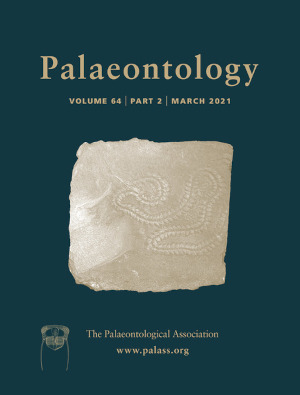Reg. Charity No. 1168330

The early Pleistocene is the key period for understanding the evolutionary history and palaeobiogeography of rabbits (Genus Oryctolagus). In western Europe, many species were endemic, making them a reliable indicator of the evolution of the terrestrial ecosystems in which many species have evolved. However, the morphological variability of rabbit species is still poorly understood and their phylogeny remains a subject of debate. Through both qualitative (morphological description) and quantitative (linear measurements and two-dimensional geometric morphometrics) approaches, we address here the morphometric diversity of the third lower premolar (p3), a tooth commonly used to distinguish leporid species, in order to assess intra- and inter-regional morphological variations in several early Pleistocene rabbit populations. Our results suggest that the different approaches are complementary and allow, on different levels, a full characterization of the p3 variability of early Pleistocene rabbits and to imply relations between populations. The size and shape variations of this tooth reflect the taxonomic and phylogenetic signals of the different species but were probably also significantly impacted by geographical position and local climatic conditions. In view of the great morphometric variability highlighted in this work, we suggest a careful reconsideration of certain dental criteria previously considered ‘diagnostic’ in the characterization of these species. However, the overall results allowed us to discuss the phylogeny of the genus Oryctolagus and to hypothesize the ecological requirements and different phases of the dispersal of taxa in western Europe, probably associated with global climate changes.
AcknowledgementsI would like to thank Jean-Philip Brugal and Arturo Morales-Muñiz for their help and support throughout my research. I would also like to thank Cécile Callou, curator of the Mammals and Lagomorphs osteological collections at the National Museum of Natural History (MNHN, Paris), who granted me access to modern rabbit collections from Santarém, Las Lomas, Navarre and Tour du Valat. In addition, I would like to thank Laurence Bourguignon (INRAP, ARSCAN) and Jean-Yves Crochet (ASPROGEO) for entrusting me with the study of rabbits from Bois-de-Riquet; Emmanuel Robert (Claude Bernard University Lyon 1) for rabbits from Perrier and Saint-Vallier; Pierre-Elie Moullé (Regional Prehistory Museum of Menton) for rabbits from Vallonnet; Vicent Vicedo and Jaume Gallemi (Museum of Natural Sciences of Barcelona) for rabbits from Cueva Victoria; Alfred Sanchis and Helena Bonet Rosado (Prehistory Museum of Valencia) for rabbits from Xabià; Marta Arzarello and Claudio Berto (University of Ferrara) for rabbits from Pirro Nord. I am very grateful to Marie Matu, the reviewers, editors and publications officer for their constructive comments that greatly improved the quality of the manuscript. Finally, this work was financed by an A*MIDEX grant (No. ANR-11-IDEX-0001-02) from the French Government programme ‘Investissements d’avenir’, and I would like to warmly thank the University of Oulu's archaeology lab for its support.